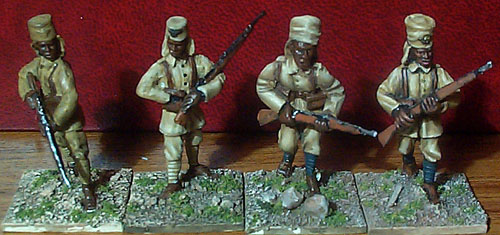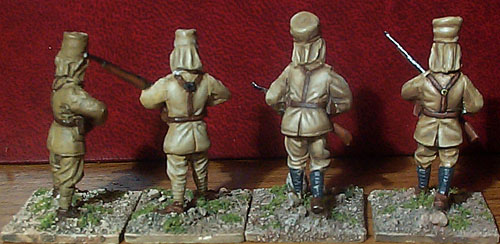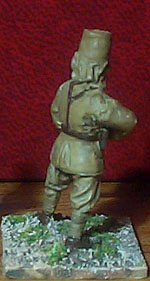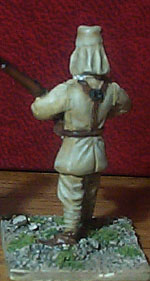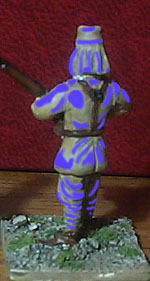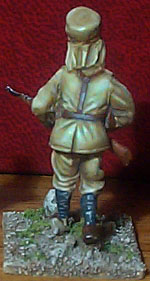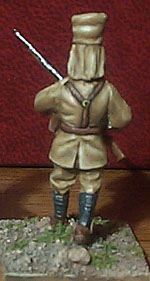|
This one looks very yellow compared to the one above, but in reality
they are more or less the same colour.
The last stage is adding a few really dark shadows and really light
highlights. Sometimes this stage will involve a lot of work and
other times almost none. This depends on the colour you are shading,
the texture of the area and your own preference as to what looks
right.
As the areas you are painting are so small, you shouldn't need
to blend them, although you can use a little water to make the edge
less distinct.
Highlights
Highlights should be almost white but not quite. Unless shading
grey or white, add a little touch of the base colour to the white,
otherwise it will appear the wrong hue.
Don't apply large areas of these highlights but save them for little
touches, generally along the edges of objects.
Shadows
Shadowing can be more widely used. Add a very dark shade of the
base colour (almost black, but again not quite) to joints between
materials such as along the edges of this askari's webbing, or between
his hat and neckcloth. This becomes a sort of 'black lining', but
use a dark tone of the base colour not black as this would look
a little harsh.
|


